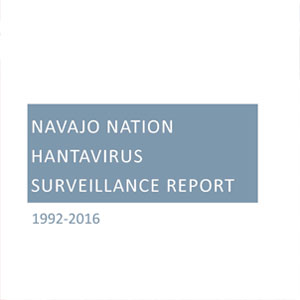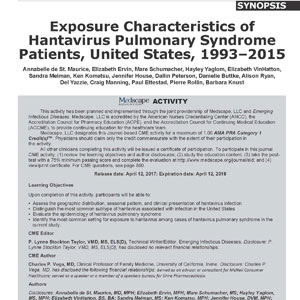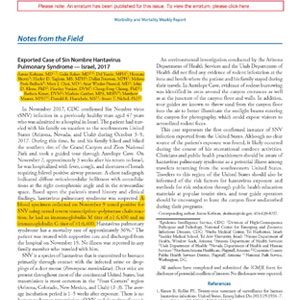Hantavirus
Hantavirus is a genus of viruses in the Bunyaviridae family. The primary species of hantavirus in the American Southwest is Sin Nombre Virus (SNV). Its main host, the deer mouse (Peromyscus maniculatus), can carry the virus in feces, urine, and saliva. The most common mode of transmission to humans is inhalation of aerosolized particles containing the virus. SNV is highly pathogenic, causing most people who are infected to develop hantavirus pulmonary syndrome. The syndrome consists of two phases – a prodromal phase characterized by fever, headache, and myalgia, sometimes accompanied by abdominal pain, vomiting, and/or diarrhea, and a second phase characterized by shock, hypotension, and pulmonary edema.

Healthy Homes Healthy People Project
|
|

Navajo Nation Hantavirus Surveillance Report (1992-2016)
|
|

Exposure Characteristics of Hantavirus Pulmonary Syndrome Patients, United States, 1993–2015
|
|

Notes from the Field-Exported Case of Sin Nombre Hantavirus Pulmonary Syndrome
|
|

Understanding Hantavirus
|